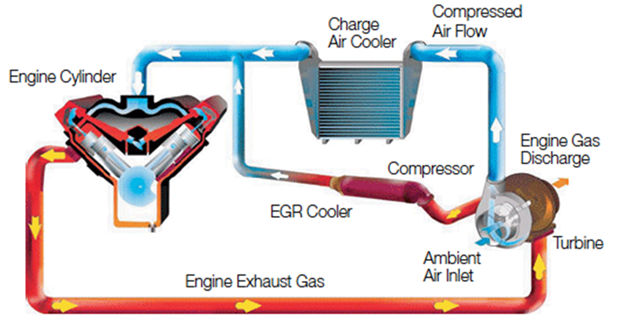Turbo Basics
How a Turbo Works
A turbocharger uses petrol or diesel engines exhaust gases to drive a turbine wheel at speeds up to 200,000 rpm.
The turbine wheel is connected by a shaft to a compressor wheel and the two wheels turn together to suck in and compress large amounts of ambient air. This air is very dense and hot, so it is passed through a charge-air cooler, where it cools and gains even higher density before entering the engine. Compressed air makes the fuel burn more efficiently, thereby delivering more power while consuming less energy.

In modern vehicles turbochargers are coupled with high pressure fuel injection systems, a combination that makes for even more efficient and cleaner combustion.
Turbos make engines:
• More Efficient – turbocharged petrol engines deliver up to 20 percent better fuel economy over a non-turbocharged equivalent. A turbo diesel engine of the same power rating delivers up to 40 percent better fuel efficiency compared to a non-boosted diesel engine.
• Better Performing – turbocharged engines create more power and torque, making vehicles more responsive and safer to drive. Turbos also prevent the loss of power at high altitude, providing significant operational benefits to turbocharged trucks and off-road machinery.
• Cleaner– turbocharged engines optimize engine air supply for cleaner combustion, enabling engines to be downsized without compromising performance, while cutting CO2 levels and contributing to a reduction in NOx.





